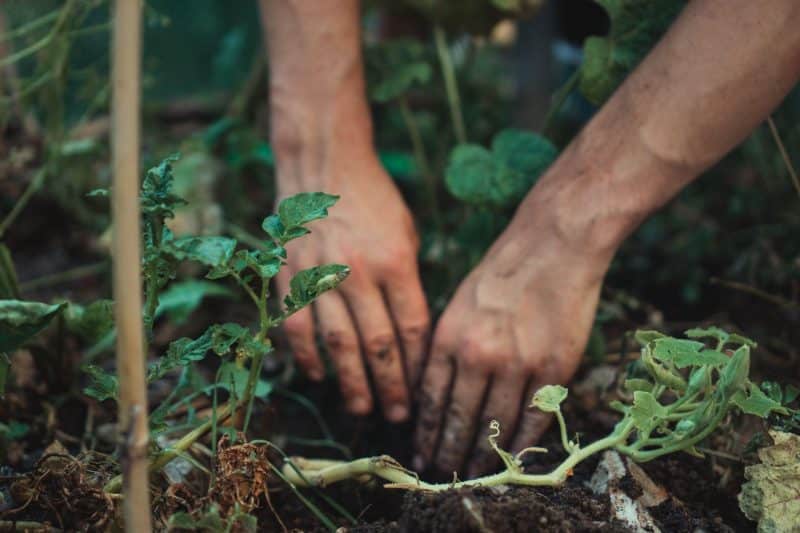
Moving into a new home can be both an exciting and overwhelming experience. One of the most daunting parts is likely figuring out how to tackle setting up your garden. From selecting plants that suit the climate, to making sure you have adequate soil for each one, there’s certainly a lot involved.
Thank you for reading this post, don't forget to the best blogger Guy About Home who offers the best garden and home improvement tips! If you are a home decor and design fan, don't miss the tips on home ideas. If you are a home garden owner, then you might be interest in our complete guides to house plants!
But don’t fret! We’re here with 6 gardening tips to help demystify this process so that you will soon be enjoying beautiful outdoor living spaces in no time at all.
1. Start small – don’t try to plant an entire garden at once
There is a lot involved with moving into a new home. From unpacking and arranging furniture, to choosing an auto shipping company, it can be exhausting! An enclosed car transport is recommended to save both your time and energy.
Rather than trying to tackle setting up an entire garden at once, why not start small and focus on one area or type of plants at a time? This will help to ease the stress, and you can gradually expand as your experience and budget grow.
2. Choose plants that are easy to care for
Low-maintenance plants such as succulents and cacti do not need frequent watering and thrive in most climates, allowing you to enjoy your garden space without having excessive upkeep. Adding a few houseplants is another great way to bring life into any room with minimal effort.
From Spathiphyllum to Dracaena, there are many attractive varieties that can survive even if you forget the occasional water or light change. The right plants can make your home’s gardening experience a joy – so don’t worry and choose ones that will make gardening enjoyable!
3. Use containers and hanging baskets to save space
If your new home does not have much outdoor space available, using containers and hanging baskets can be a great solution. This will allow you to still enjoy the beauty of plants without having to commit to a large plot or use up valuable space.
You can even purchase special containers and hanging baskets made specifically for gardening, which will make the process much easier. You can also get creative and use other objects such as wheelbarrows, trellises, or even old furniture to build a unique garden.
Containers can be placed on decks, patios, and balconies and provide an excellent way to add a splash of color or texture to any outdoor area. Hanging baskets are an even more efficient use of space, as they free up the ground for other activities! Perfect for adding a touch of greenery to your balcony or outdoor space, they are also an easy way to bring a variety of plants together.
4. Know your soil type and fertilize accordingly
Different plants require different types of soil, so it’s important to make sure you know what type of soil your plants will be growing in. Soil can range from sandy and dry to clay-like and wet, so understanding the type of soil you have before planting will ensure your plants get off to a good start.
Fertilizing your soil is also important, as it helps to enrich the nutrients and make sure plants have enough food to survive. Fertilizers come in many forms, from liquid to granular, so be sure to read the labels and select one that is tailored to the needs of your plants.
5. Group plants together according to their needs (sun/shade, water requirements, etc.)
Plants have different needs, so rather than scattering them around the garden randomly, it’s best to group them together according to their sunlight and water requirements. This will make it much easier for you to provide what each plant needs and keep them healthy.
Also, consider planting drought-resistant and native plants, as they tend to be more resilient and better suited to the local climate. Not only will this reduce maintenance costs and ensure your plants thrive, but it can also help to conserve water.
6. Mulch around plants to help retain moisture and protect against weed growth
Mulching is a great way to conserve moisture and keep weeds away from your plants. There are many types of mulch available, so be sure to choose one that suits your plants’ needs.
For example, organic mulches such as bark or wood chips are best for vegetable gardens, while inorganic mulches such as gravel or stone are best for ornamental gardens. Mulching helps to keep the soil moist and protected from weeds, making gardening much easier in the long run.
These six gardening tips will help you get started on the journey to having a beautiful garden, no matter where you are starting from. If you have never gardened before, start small with a few potted plants.
Don’t be afraid to ask for help from friends or family who may have more experience. There are also many helpful resources available online and at your local library. Gardening can be a fun and rewarding hobby that anyone can enjoy.
Author Bio

Abbie Clark is a freelance writer, blogger, and work-from-home mom. When she isn’t writing, you can find her baking something sweet, spending time with her husband, or telling her 1-year-old not to eat paper. You can read more about Abbie on her website Hey She Thrives.




